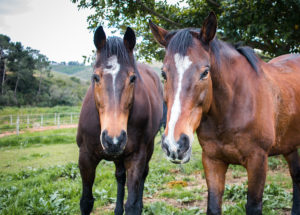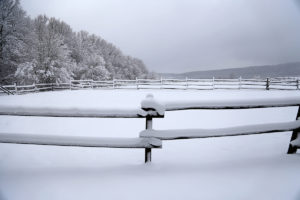Episode 37: Do This During Groundwork With Your Horse



Before we begin I want to clear up something about last week’s podcast. I randomly mentioned something going on with Popcorn’s ear. He has a papilloma virus or ear plaque, but it’s improving dramatically.
In this episode, I’m going to explain the first communication I developed during groundwork. I’m also going to talk about the difference between leading versus drawing. In my final segment with Dr. Monty, we answer a listener question about increasing exercise tolerance versus overworking.
“When horses interact, and they have a lot of respect for each other, they have a bigger bubble.” Stacy Westfall Click To Tweet
Show Notes:
[02:45] When someone brings a horse in for a lesson some of the first things I want to know include can I get this horse out of my space and can I get it to face me.
[05:40] Horses that are in your space need to learn how to back out of your space. You can make your arms big or tap below the knee.
[07:26] I do a lot of my work on a lunge line.
[08:43] When a horse is on the line, I want to keep them out of my space and ask them to turn and face me. With this, I no longer feel crowded and the horse is facing me.

[09:45] If you watch the video in my first email newsletter, you will see an example of Popcorn and two younger horses deciding who is going to back out of the space.
[11:15] When horses interact, and they have a lot of respect for each other, they can increase their ‘bubble’.
[12:18] I categorize them as kickers or those who bite.
[12:56] Observe the language that you see your horses using when they interact with each other.
[13:06] Can I keep the horse out of my space at least four feet out? Is the horse facing me? Am I able to send this horse to the left or the right?

[14:04] Communication gets more subtle. Body language is big in the beginning.
[15:04] Use big animated body language when first working with a horse. The end goal is to get the communication really refined.
[16:31] I’ll have the owner stand in a hula hoop and see if they can back the horse out of their space.
[17:05] These are some of the things to think about when it comes to the horse’s body.
[18:08] At the beginning, I use drawing them in more than leading. I usually lead the horse from the side, so it’s not pulling directly against me.

[20:06] Your body has so much power to communicate.
Dr. Monty Answers a Listener Question About Increasing Exercise Tolerance Versus Overworking
[25:20] Where is the line between over practicing and keeping a rhythm?
[26:23] Look how the horse is breathing and how the horse is sweating. You can tell how a horse is doing by watching respiration and sweat. Also think how healthy a horses joints are.
[28:00] Exercise your horse three to five times a week and start easy with a trot before going into canter work. It takes two to three weeks for a horse to increase strength and endurance.
“Think about the language you see happen in the pasture or the round pen when you are working with your horse.” Stacy Westfall Click To Tweet
Links and Resources:
Equine Aural Plaques--with photos. This is what Popcorn has in his ears.
Are ear plaques better left alone?
Equithrive tell them Stacy sent you.
1 Comments
Leave a Comment
SUBSCRIBE TO THE PODCAST HERE:





YOURS FREE
WHY IS MY HORSE...?


I like how you are having professionals answer questions regarding equine care. I can totally relate to Casey….one time around the arena…sounds a little like me as well.